HP Series 20SA (220/230VAC) 3500W/5500W Inverter/Charger
HP Series 20SA Inverter/Charger: Versatile hybrid system supporting parallel operation, delivering high-efficiency energy management, advanced MPPT tracking, and reliable power supply enhancements for your solar system.
The HP Series 20SA is an advanced hybrid inverter/charger, supporting multiple energy sources like utility, oil generator, and solar. It offers parallel operation, high reliability, and various charging modes. Featuring a large LCD screen and Modbus communication, it provides efficient energy management. With optimized MPPT technology and dual closed-loop control, it maximizes solar power utilization. This inverter ensures high-quality, stable, and reliable electricity for your needs.
| Model | HP3522-AH1250P20SA | HP3542-AH0650P20SA | HP5542-AH1050P20SA |
| Utility input | |||
| Utility Voltage | 176VAC to 264VAC (Default) 90VAC to 280VAC (Configurable) |
||
| Utility Frequency | 45Hz to 65Hz | ||
| Maximum Utility Charging Current | 110A | 60A | 100A |
| Switch Response Time | Switch Response Time – Inverter to Utility: 10ms; Switch Response Time – Utility to Inverter (when the load power is higher than 100W): 20ms |
||
| Inverter output | |||
| Inverter Rated Power (@30℃) | 3500W | 3500W | 5500W |
| 3-second Transient Surge Output Power | 7000W | 7000W | 8500W |
| Inverter Output Voltage | 220/230VAC±3% | ||
| Inverter Frequency | 50/60Hz±0.2% | ||
| Output Voltage Waveform | Pure sine wave | ||
| Load Power Factor | 0.2-1(VA ≤ Rated output power) | ||
| THDu (Total Harmonic Voltage Distortion) | ≤3% (24V resistive load) | ≤3% (48V resistive load) | |
| Maximum Load Efficiency | 91% | 92% | 92% |
| Maximum Inverter Efficiency | 93% | 94% | 94% |
| Parallel Function | Yes, 12 units in standard, 16 units at most | ||
| Solar controller | |||
| PV Maximum Open-circuit Voltage | 500V (At minimum operating environment temperature) 440V (At 25℃) |
||
| MPPT Voltage Range | 85V to 400V | ||
| PV Maximum Input Power | 4000W | 4000W | 6000W |
| MPPT Input Channels | One way | One way | Two ways |
| PV Maximum Input Current | One way, 16A | One way, 13A | Two ways, 2x15A |
| PV Maximum Short-circuit Current | One way, 18A | One way, 15A | Two ways, 2x18A |
| PV Maximum Charging Current | 120A | 60A | 100A |
| MPPT Maximum efficiency | ≥99.5% | ||
| Battery | |||
| Battery Rated Voltage | 24VDC | 48VDC | |
| Battery Work Voltage Range | 21.6VDC to 32.0VDC | 43.2VDC to 60.0VDC | |
| Battery Maximum Charging Current | 120A | 60A | 100A |
| Others | |||
| No-load Losses | <1.4 A | <0.7A | <1.0 A |
| Test condition: Utility, PV and Load are not connected, AC output is ON, fan stops, @24V input | Test condition: Utility, PV and Load are not connected, AC output is ON, fan stops, @48V input | ||
| Standby Current | <0.9A | <0.5A | <0.75A |
| Test condition: Utility, PV and Load are not connected, AC output is OFF, fan stops, @24V input | Test condition: Utility, PV and Load are not connected, AC output is OFF, fan stops, @48V input | ||
| Work Temperature Range | -20℃ to +50℃ (When the environment temperature exceeds 30℃, the actual output power is reduced appropriately) | ||
| Storage Temperature Range | -25℃ to +60℃ | ||
| Enclosure | IP20 | ||
| Relative Humidity | < 95% (N.C.) | ||
| Altitude | <4000M (If the altitude exceeds 2000 meters, the actual output power is reduced appropriately) | ||
| Mechanical parameters | |||
| Dimension (Length x Width x Height) | 590mm × 288mm × 163mm | 534mm × 288mm × 163mm | 590mm × 288mm × 163mm |
| Mounting size (Length x Width) | 568mm x 245mm | 512mm x 245mm | 568mm x 245mm |
| Mounting hole size | Φ9mm/Φ10mm | Φ9mm/Φ10mm | Φ9mm/Φ10mm |
| Net Weight | 14 Kg | 12.0Kg | 14.8Kg |
Manual
EPEVER-Manual-HP Series 20SA-V1.3
DataSheet
EPEVER-DataSheet-HP Series 20SA
Introduction
HP Series 20SA webinar
Product Highlights
Pure sine wave output
Supports battery or non-battery modes
Built-in BMS-Link module for secure battery charge and discharge control
Lithium battery self-activation
PFC technology reduces the demand on the power grid capacity
Advanced MPPT technology, with Max. tracking efficiency higher than 99.5%
HP5542-AH1050P20SA supports two PV inputs to improve PV utilization
Supports charging from multiple types of generators
Battery charging or discharging current limits are compatible with various types of batteries
Adjustable maximum utility charging current for flexible configuration of utility charging power
Large size LCD display for better status monitoring
RS485 communication interface with optional 4G, WiFi, or TCP modules for remote monitoring
Built-in Bluetooth to adjust settings through EPEVER APP
Comprehensive electronic protections
-20℃~+50℃ operating temperature range to meets more environment requirements
A new type of all-digital energy storage integrated machine for multi-source management
AC output supports parallel operation, standard configuration of 12 units in parallel
AC output parallel operation supports single-phase and three-phase settings
1 review for HP Series 20SA (220/230VAC) 3500W/5500W Inverter/Charger
HP-AHP20SA series accessories: For enhanced functionality, users can add a WiFi module or TCP module or RTU 4G to the RS485 communication port. These additions allow for remote monitoring and parameter adjustments of the inverter/charger via a smartphone app. For detailed setup instructions, please refer to the WiFi or TCP module user manual.
EPEVER Admin 20 March 2024
To begin safely with the HP-AHP20SA series inverters, adhere to the following sequence and precautions:
Connection Order:
- Ground the inverter/charger first.
- Connect the battery, ensuring the correct polarity.
- Attach the AC load, carefully checking connections.
- Connect PV modules, taking care of high voltage.
- Hook up Utility or Generator input.
- Add any optional accessories last.
- For disconnections, simply reverse this order.
Safety Precautions:
- Do not install in environments prone to humidity, salt spray, corrosion, grease, flammability, explosive materials, or dust accumulation.
- Disconnect all switches and breakers before starting any wiring activities.
- Choose appropriate wire and breaker sizes based on the model specifications and installation distances.
- Ensure tight and secure connections, using cable clamps to stabilize cables. Avoid opening or touching internal components of the inverter/charger; allow ten minutes for cooling down before any internal operations.
- Be cautious around high voltage areas, especially the PV input, utility input, and AC output connections.
- Do not touch the fan while it is operational to prevent injury.
Additional Considerations:
- Follow the correct installation steps, especially when handling batteries.
- Maintain sufficient clearance around the inverter/charger for heat dissipation.
- Properly ground the cabinet of inverter/charger but avoid grounding the battery, PV, or AC terminals.
- If using in areas with frequent lightning, install an external surge arrester.
- Test the generator before use due to potential complex output conditions.
Upon initial startup, double-check wire connections and proceed with setting parameters as per the manual.
EPEVER Admin 20 March 2024
To ensure the safe operation of the HP-AHP20SA series inverter/charger, follow these guidelines:
General Precautions:
- Never install in a sealed enclosure with flooded batteries to prevent corrosion from battery fumes.
- Ensure proper ventilation; do not install in confined, harsh environments (e.g., humid, salty, corrosion, greasy, flammable areas).
- Disconnect all switches and breakers before wiring.
- Use tight connections and cable clamps to secure and stabilize cables.
- Do not open or touch internal components immediately after use; wait ten minutes to allow cooling.
Installation and Wiring:
- Follow the correct installation steps, especially when handling batteries.
- Maintain sufficient clearance around the inverter/charger for heat dissipation.
- Adhere to the recommended order for connecting components: Ground > Battery > Load > PV > Utility/Generator > Optional Accessories.
- Choose appropriate wire and breaker sizes based on the model specifications and installation distances.
Operational Safety:
- Avoid electric shock risks by correctly connecting leads and ensuring ground safety.
- If using in areas with frequent lightning, install an external surge arrester.
- For generator connections, test beforehand due to varied output conditions.
Upon initial startup, double-check wire connections and proceed with setting parameters as per the manual.
EPEVER Admin 20 March 2024
When connecting the HP-AHP20SA series, it's important to follow a specific sequence and take careful measures:
Connection Sequence:
Choose appropriate breaker sizes based on the model specifications and installation distances.
- Start by connecting the load circuit breaker.
- Follow with the load circuit breaker.
- Then, connect the PV array circuit breaker.
- Finally, connect the utility circuit breaker.
Load Gradual Power Up:
- Once the AC output is stable, begin powering up the AC loads.
- Turn on loads one by one, heavy loads first, to avoid overload protection!
- This gradual approach helps prevent potential protection triggers caused by large transient current impulses.
EPEVER Admin 20 March 2024
The HP-AHP20SA series inverter/charger prioritizes power sources based on availability and capacity in two main modes: Battery Mode and No Battery Mode.
Battery Mode:
- PV and Utility Unavailable: Uses battery if above minimum voltage/SOC.
- PV Available, No Utility: PV powers and charges the battery; battery assists if PV is low.
- Both PV and Utility Available: PV primary; utility backs up when the battery is low.
- No PV, Utility Available: Battery powers if sufficient; otherwise, utility supplies.
No Battery Mode:
- PV and Utility Available: PV primary; utility assists if PV is insufficient.
- Only PV Available: PV powers load.
- Only Utility Available: Utility powers load.
EPEVER Admin 21 March 2024
The inverter/charger adapts to the available power sources as follows:
PV Available, No Utility:
- PV powers and possibly charges the battery if PV > load power.
- If PV ≤ load power, battery assists PV.
- PV charges the battery only when the battery is below the set voltage/SOC.
No PV, Utility Available:
- The battery powers the load if above minimum voltage/SOC.
Refer to the manual for specific voltage/SOC values.
The specific working principle is also related to the charge and discharge mode, please refer to the manual for details.
EPEVER Admin 21 March 2024
The HP-AHP20SA series offers several modes, adapting to different power availability scenarios:
With PV and Utility Available:
- Charging Modes: Solar, Solar Prior, Utility & Solar, Utility Prior.
- Discharging Modes: PV>Bypass> Battery, PV>Battery> Bypass,Bypass>PV> Battery
Factory default mode: Prioritize PV, Battery, or Utility based on power levels and battery conditions
With Only Utility Available:
- Charging Mode: Utility.
- Discharging Modes: Varies based on battery voltage/SOC and setting discharge mode
- Utility powers load and charges battery if battery levels are low.
The modes adjust power source usage based on PV power, battery voltage, and SOC. For detailed mode operations and conditions, refer to the manual.
EPEVER Admin 21 March 2024
The HP-AHP20SA series operates differently based on the availability of PV, Utility, and the state of the battery. The system shifts between various modes depending on factors like PV power, load power, battery voltage, and State of Charge (SOC). These include scenarios where:
- Both PV and Utility are available or not available.
- Only PV or only Utility is available.
The inverter/charger adapts its charging and discharging behavior to efficiently utilize the available power sources and maintain battery health.
For detailed operational scenarios and conditions, please refer to the manual.
EPEVER Admin 21 March 2024
The HP-AHP20SA series is equipped with a comprehensive suite of safety features to protect both the system and connected devices:
Automatic Protections: Includes safeguards against load output short circuits & overload, device overheating, PV short circuit, utility input voltage irregularities, battery polarity issues, and battery overcharging or discharging.
Responsive Measures: The system promptly reacts to anomalies, such as shutting off output during short circuits and overheating, with built-in recovery processes.
Preventive Actions: Prevents damage through proactive measures like limiting PV charging current and Power, ensuring safe utility input, and protecting against battery reverse polarity.
These features work together to provide a reliable and secure operating system, ensuring the longevity and safety of the inverter/charger and connected devices.
EPEVER Admin 21 March 2024
The HP-AHP20SA series features a comprehensive fault detection system, providing specific error codes and indications for various issues:
PV Faults: Range from over-temperature protection to pre-charge timeouts, each with unique error codes and indications like changes in the PV indicator color. Resolution steps generally involve ensuring proper installation conditions and resetting the system.
Utility Faults: Include over-voltage, under-voltage, and frequency errors, signaled by changes in the GRID indicator. Troubleshooting often involves checking utility connections and power ratings, followed by a system reset.
Load and BMS Faults: Cover load current errors and BMS-related issues like charge disables or temperature errors. These are addressed by checking connections, and settings, and ensuring proper environmental conditions.
Each fault type is accompanied by specific error codes and indications, guiding users toward appropriate troubleshooting steps.
For a detailed understanding of each fault status and resolution, refer to the inverter/charger manual.
EPEVER Admin 21 March 2024
The HP-AHP20SA series provides specific protections against PV-related issues like over-current and short circuits:
PV Limit Current/Power Protection: If the actual charging current or power of the PV array exceeds its rated capacity, the system automatically regulates the charge of the battery according to the rated current or power.
PV Short Circuit Protection: In the event of a short circuit when the PV is not charging, the inverter/charger is designed to remain undamaged.
EPEVER Admin 21 March 2024
The HP-AHP20SA series is equipped with a robust system to handle utility input irregularities, safeguarding against voltage-related issues:
AC Over Voltage Protection (Err8): When the utility voltage exceeds the normal range, indicated by the red GRID indicator and intermittent beeps, the system stops charging and supplying the load.
AC Under Voltage Protection (Err25): If the utility voltage falls below the acceptable threshold, the system similarly ceases charging and power supply, with the red GRID indicator signaling the issue.
Additional Protections:
- AC Over Current Protection (Err9): Triggers if the load power exceeds the inverter/charger's capacity.
- AC Pre-Charge Timeout (Err28): Ensures safe pre-charging of the system.
- AC Relay Adhesion (Err29): Deals with relay issues.
- AC Frequency Error (Err31): Addresses frequency discrepancies.
EPEVER Admin 21 March 2024
The HP-AHP20SA series ensures battery safety through several key protection mechanisms:
- Battery Reverse Polarity: Shields against potential damage from incorrect battery connections.
- Overvoltage Protection: Halts charging when battery voltage exceeds a set threshold, preventing overcharging.
- Discharge Protection: Stops battery discharging when voltage drops below a certain level, avoiding over-discharge.
EPEVER Admin 21 March 2024
For the HP-AHP20SA series, the following load-related fault indications and their universal troubleshooting steps are:
- Load Current Offset Error (Err33)
- Overload (Err48)
- Overload Lock (Err55)
In each case, the recommended steps are:
- Disconnect the load completely.
- Turn off the inverter/charger.
- Wait 5 minutes, then turn on the inverter/charger to check if normal operation resumes.
- If the issue persists, contact technical support for further assistance.
EPEVER Admin 21 March 2024
The inverter/charger in the HP-AHP 20SA series manages internal and other faults by monitoring its internal temperature. If overheating occurs, it temporarily stops charging and discharging operations. Normal charging and discharging resume only when the internal temperature stabilizes and remains within safe limits for a duration of over 20 minutes or turn off the inverter/charger. Wait 5 minutes and then turn on the inverter/charger.
EPEVER Admin 21 March 2024
For handling BMS (Battery Management System) related faults in the HP-AHP 20SA series, the key is to focus on the specific error codes and take appropriate actions. This involves:
- Checking communication status, communication connection, or settings for faults related to BMS communication errors.
- Addressing overvoltage and undervoltage issues by monitoring and adjusting relevant parameters, or replacing battery bank.
- Responding to charge protection and temperature errors by examining the charging conditions and temperature settings, or replacing battery bank.
EPEVER Admin 21 March 2024
For troubleshooting PV, utility, and load faults in the HP-AHP20SA series, a structured approach is advised:
PV Faults: Include over-temperature and voltage irregularities. Initial steps involve checking the installation environment, and system configuration, verifying voltage levels, and resetting the inverter/charger. Contacting support is recommended for unresolved issues.
Utility Faults: Tackle problems like over voltage, over current, and frequency errors. The process usually involves verifying utility voltage, load power, and a systematic restart of the system.
Load Faults: Address issues such as load current offset and overload. The common resolution involves disconnecting the load, restarting the inverter/charger, and seeking technical support if problems persist.
BMS (Battery Management System) Faults: Entail checking communication status and settings, particularly for faults like charge disable, over-voltage, and temperature errors.
In all cases, a methodical check and reset routine is key, with technical support as a fallback for complex issues.
EPEVER Admin 21 March 2024
The HP-AHP20SA series is designed to manage operations effectively in response to environmental temperatures. Specifically, if the environment or battery temperature falls below a predefined set value, the inverter/charger will automatically stop both charging and discharging the battery. This feature ensures the system operates within safe temperature ranges, protecting both the device and the battery.
EPEVER Admin 21 March 2024
Model No.: HP3542-AH0650P20SA
Dimensions (Length x Width x Height): 534mm x 288mm x163mm
Weight: 12Kg
Model No.: HP5542-AH1050P20SA
Dimensions (Length x Width x Height): 590mm x 288mm x163mm
Weight: 14.8Kg
EPEVER Admin 21 March 2024
The HP-AHP20SA series inverter/charger should be installed with specific environmental considerations in mind:
Temperature and Humidity: Suitable for operating in temperatures ranging from -20°C to +50°C. Above 30°C, charging and load power may need reduction, and 100% load output is not supported. The storage temperature range is -25°C to +60°C, with relative humidity below 95% (non-condensing).
Altitude: Ideal for altitudes up to 4000 meters. Above 2000 meters, the output power needs adjustment.
Installation Environment: It is recommended to install the inverter/charger indoors, away from humid, salt spray, corrosive, greasy, flammable, explosive, or dusty environments.
Safety and Wiring: Ensure proper ventilation, particularly in enclosed spaces. Avoid placing the inverter/charger near flooded lead-acid batteries.
Make sure that all connections are tight and secure to prevent heat accumulation and potential fire hazards.
Use cables and connections appropriate for the current density, and ensure the inverter/charger is properly grounded.
EPEVER Admin 21 March 2024
To safely disconnect and decommission the HP-AHP20SA series inverters, follow these steps:
- Turn off the inverter's AC output switch.
- Disconnect the utility input breakers.
- Disconnect the PV input breakers
- Switch off the inverter's DC supply.
Important: High voltage remains inside the inverter/charger even after it's switched off. Do not open or touch internal components immediately, there are no user-serviceable items in this product. Wait for at least ten minutes before conducting any internal operations.
EPEVER Admin 21 March 2024
HP-AHP20SA series employs advanced control algorithms for the AC to DC charging process. This includes full digital Power Factor Correction (PFC) and dual closed-loop voltage-current control, allowing it to achieve a power factor close to 1, enhancing control accuracy.
EPEVER Admin 21 March 2024
For the installation of the HP-AHP20SA series inverters, it's crucial to ensure compatibility and stability with the connected power source, particularly when using generators. High-quality alternators and Auto Voltage Regulation (AVR) in generators are recommended for stable power output. The HP-AHP20SA series has a specific 'Generator' setting in its parameters list, optimized for use when the AC input is from a generator. This setting enhances the charging capability and overall efficiency when connected to a generator, ensuring the system operates effectively with the power supplied by the generator.
EPEVER Admin 21 March 2024
In three-phase and parallel configurations, the HP-AHP20SA series allows for flexible integration. Users can specify the number of units operating in parallel for each phase (Phase A, B, or C) based on their specific requirements. This flexibility enables expansion of capacity in any phase as needed, ensuring efficient power distribution and usage in complex system setups.
EPEVER Admin 21 March 2024
Generator Selection: Choose a generator compatible with the HP-AHP20SA series. Preferably, use an inverter generator as they provide more stable power and frequency output compared to non-inverter types. Oil generators with complex outputs require no-load trial testing to ensure voltage and frequency compatibility.
Generator Sizing: Ensure the generator is appropriately sized for the inverter/charger's power demands. A generator too small might need adjustments in the HP-AHP20SA series settings to prevent overloading.
Operational Considerations: Be patient during synchronization, as the inverter/charger might take time to align with the generator's output. Use a stabilizing load if necessary to smooth out initial fluctuations in voltage or frequency.
Software Settings: Adjust the HP-AHP20SA's settings if needed, especially if the generator is struggling to synchronize or maintain a stable output. This might include altering voltage or frequency limits to accommodate the generator's capabilities.
Safety Measures: Ensure proper ventilation and airflow for the generator, particularly during heavy use cases like battery charging. Be aware of the generator's operational limits, including duty cycle and rest periods.
EPEVER Admin 21 March 2024
When using the HP-AHP20SA series with generators, consider these troubleshooting steps and safety considerations:
Generator Type: Prefer inverter generators over non-inverter ones for consistent charging current and power stability. Non-inverter generators may not reliably reach the rated power.
Pre-Use Testing for Oil Generators: Conduct on-site no-load trials with oil generators due to their complex output conditions. Ensure voltage and frequency fluctuations remain within the HP-AHP20SA's tolerable range to prevent operational issues.
Regular Maintenance: Perform biannual maintenance checks. Ensure clear airflow, inspect for cable damage, check LED/LCD for error indications, tighten terminal screws, clean dirt and check for insect nests or corrosion, and ensure the lightning arrester is in good condition.
Utility Faults Handling: For AC over voltage, over current, under voltage, pre-charge timeout, relay adhesion, or frequency errors, disconnect AC input, turn off the inverter/charger, and wait 5 minutes before restarting. If issues persist, contact technical support.
EPEVER Admin 21 March 2024
When selecting a generator for the HP-AHP20SA series, it's important to ensure that the generator's capacity matches or exceeds the power demands of the inverter/charger. Consider the following guidelines:
Generator Capacity: Choose a generator with enough capacity to handle the peak and continuous power requirements of the HP-AHP20SA series. A larger generator than the minimum requirement is often preferable to provide a buffer against overload, especially under heavy loads or when charging batteries.
Settings Adjustment: If the generator is smaller than the ideal size for your inverter/charger, adjust the settings on the HP-AHP20SA series to reduce the AC input current limit and/or the DC charge current limit. This helps prevent overloading the generator.
Duty Cycle: Pay attention to the generator's duty cycle rating. Some generators might be advertised with peak output capabilities but are only designed to sustain a fraction of that output for extended periods.
Compatibility: Ensure that the generator's output frequency and voltage match the requirements of the HP-AHP20SA series. Do not mix and match frequencies and voltages from different regions.
EPEVER Admin 21 March 2024
Users can effectively manage generator performance by utilizing the dry contact interface of the HP-AHP20SA series. This interface connects to the generator's switch for automated control, turning the generator on when the battery voltage drops below a preset threshold and off when the voltage exceeds this threshold. This system helps in maintaining optimal battery levels and ensures efficient generator operation.
EPEVER Admin 21 March 2024
When using the HP-AHP20SA series in complex setups like 3-phase or parallel configurations with generators, it's important to ensure proper load balancing and power distribution across all phases. The system allows for flexible parallel unit arrangement in each phase, which should be configured based on power requirements and generator capacity. This approach helps in achieving stable and efficient operation in these more sophisticated system designs.
In addition, in such a hybrid system, the configuration of each device needs to be reasonable, and the diameters and lengths of all input and output connecting lines need to be equal.
EPEVER Admin 21 March 2024
- Pure sine wave output
- Support Battery mode and Non-Battery mode
- Support Lithium battery and Lead acid battery
- Supportsutility/generator charging, solar charging, utility bypass output, and inverter output
- supports two PV inputs, and tracking efficiency higher than 99.5%
- Supports charging from multiple types of generators
- Built-in BMS-Link module to communicate with the BMS of Lithium batteries
- AC output supports parallel connection of multiple units
- 4G, WiFi, or TCP modules for remote monitoring
- With the function of historical data recording
EPEVER Admin 21 March 2024
The maximum efficiency of the HP-AHP20SA series inverter is 94%.
EPEVER Admin 21 March 2024
This inverter supports charging batteries which store energy and supply the load when there is no PV power.
EPEVER Admin 21 March 2024
It supports 12 units in standard application, and support up to 16 units (customized) in parallel.
EPEVER Admin 21 March 2024
AGM, GEL, FLD, LFP15S, LFP16S, LNCM13S, LNCM14S and User
EPEVER Admin 21 March 2024
Designed for diverse environments, it operates efficiently within a temperature range of -20℃ to +50℃.
EPEVER Admin 21 March 2024
The maximum PV input power for 3.5KW is 4000W and 5.5KW is 6000W.
EPEVER Admin 21 March 2024
- Battery Reverse polarity protection, overcharging, and over-discharging.
- Utility input protections for overvoltage, undervoltage, and overload.
- Battery protections for overvoltage, over-discharging, and reverse polarity.
- Load output protections against short circuits and overload.
- Overheating protection to ensure safe operation under high-temperature conditions.
EPEVER Admin 21 March 2024
DO NOT install the inverter/charger and flooded lead-acid battery in a sealed space. Otherwise, a fire may occur when the terminals produce sparks, and it ignites the flammable gas released by the battery.
EPEVER Admin 21 March 2024
Remote management and control are possible through the Solar Guardian app, WiFi, or TCP or RTU 4G modules.
EPEVER Admin 21 March 2024
The inverter can operate in a no-battery mode, supplying load with solar and utility simultaneously.
EPEVER Admin 21 March 2024
Warranty voiding factors include improper use, inappropriate environment, exceeding the current/voltage/power limits, operating in temperatures beyond the rated range, not following manual instructions, unauthorized repair attempts, force majeure, and damage during transportation or handling.
EPEVER Admin 21 March 2024
The standard distance of Bluetooth on the HP series 20SA is 20 meters. No wall or stumbling block should be on the way.
EPEVER Admin 7 August 2024
Yes, the HP Series 20SA includes a built-in Bluetooth adapter, and clients can add a Wi-Fi adapter via the RS485 communication port. Both adapters can operate independently, but they cannot function simultaneously.
EPEVER Admin 7 August 2024
The HP Series 20SA is designed to operate within a temperature range of -20 to 50°C and has undergone extensive testing in high-low temperature environments. Diagrams depicting its performance are available below. If ambient temperatures exceed 30°C, we recommend reducing the load power to prevent the activation of high-temperature protection features. Should the internal temperature reach 80°C, the HP20 Series SA will automatically cease output to ensure safety.
EPEVER Admin 7 August 2024
It is recommended to install a breaker between the PV inputs and the HP Series 20SA for safety. Please refer to the image below for details.
EPEVER Admin 7 August 2024
The cooling fans of HP series 20SA operate at a minimum noise level of 43 dB and can reach up to a maximum of 53 dB under full-speed conditions.
EPEVER Admin 8 August 2024
The HP Series 20SA is designed for off-grid applications, necessitating that the load be connected to its AC output for optimal performance.
EPEVER Admin 8 August 2024
When the grid goes offline, the HP series 20SA inverter charger continues to operate by charging the batteries from the PV panels and supporting connected loads.
EPEVER Admin 8 August 2024
No, the HP series 20SA does not include lightning protection. Please follow the guidelines for using the HP series 20SA and ensure safe operation.
EPEVER Admin 8 August 2024
Solar Panel Capacity for HP series 20SA:
For 3.5KW, HP series 20SA the PV input should be 4KW, and for 5.5KW HP20SA the PV input should be 6KW, Please note the voltage of PV should not over 440V at 25℃.
EPEVER Admin 8 August 2024
HP series 20SA solar input terminals:
For the 3.5KW HP series 20SA, there is one PV input terminal. For the 5.5KW HP series 20SA, there are two PV input terminals.
EPEVER Admin 8 August 2024
Parallel Connection HP series:
For both single-phase and three-phase setups, the maximum number of units that can be connected in parallel is 12. Special custom orders can accommodate up to 16 units.
EPEVER Admin 8 August 2024
Yes, NaFePO4 batteries are compatible; however, default settings are not suitable. Customers must adjust the charging and discharging voltages via "expert" mode to ensure proper functionality.
EPEVER Admin 9 August 2024
HP series 20SA Lifepo4 Battery Compatibility:
Yes, it supports various Lifepo4 battery models including LFP15S, LFP16S, LNCM13S, and LNCM14S.
EPEVER Admin 9 August 2024
Wifi Adapter for HP Series 20SA Inverters: For basic information about the system setup, one WiFi adapter is sufficient. However, if detailed information from each unit is required, each HP Series 20SA inverter must be equipped with its own WiFi adapter.
EPEVER Admin 9 August 2024
HP Series 20SA Parallel Operation:
When communication issues arise among connected HP Series 20SA inverters, the system will trigger an alarm and cease output to prevent any operational errors.
EPEVER Admin 9 August 2024
Currently, we only provide IP65-rated inverter chargers, for instance, the HP Series 65A, which includes a heat sink.
EPEVER Admin 9 August 2024
The HP series 20SA requires a start-up voltage of 100Vdc from PV panels to begin operation.
EPEVER Admin 9 August 2024
The refresh rate of the Solar Guardian monitoring system is determined by the local data center's capacity. We plan to enhance real-time monitoring capabilities by establishing more data centers in various countries.
EPEVER Admin 9 August 2024
Paralleling different capacity inverters is not suggested. Models of different capacities in the HP series 20SA cannot be paralleled due to compatibility issues.
EPEVER Admin 9 August 2024
The HP series 20SA's fans are capable of adjusting their speed based on temperature variations, ensuring efficient cooling.
EPEVER Admin 9 August 2024
Parallel Battery Connection: For systems with multiple batteries, it is recommended to connect the batteries together first to ensure consistent and stable power distribution across all units.
EPEVER Admin 9 August 2024
Currently, our HPS-AHL series including models 1KW, 1.5KW, and 2.5KW, provide a DC output that supports systems running on 12V. We continuously assess customer needs for future product enhancements.
EPEVER Admin 9 August 2024
Non-Inverter Generator Support:
Non-inverter generators provide power without a built-in inverter, leading to more fluctuation in voltage and frequency. The HP series 20SA hybrid inverters are compatible with various generator types, including non-inverter ones. Users can easily set the Generator AC input mode through the LCD interface on the HP series 20SA.
EPEVER Admin 9 August 2024
Yes, our MP series offers split-phase functionality, catering to applications requiring dual voltage outputs.
EPEVER Admin 9 August 2024
HP Series Three-Phase Inverter Redundancy: Yes, the HP series 20SA supports three-phase systems and allows for redundancy. Clients can install spare units that remain offline but can be manually activated if primary units encounter faults.
EPEVER Admin 9 August 2024
For single-phase configurations, the HP Series 20SA supports an AC voltage range of 90-285Vac. In three-phase setups, it can reach voltages exceeding 380V, providing robust power solutions for diverse operational needs.
EPEVER Admin 9 August 2024
Unfortunately, our HP Series 20SA does not have UL1741 certification for use with lithium batteries, but it still has gigh-quality performance.
EPEVER Admin 9 August 2024
Yes, the HP Series 20SA can be set to “Solar Priority” mode. You can also configure the SOC values to automatically switch between grid and battery based on the battery's charge level, ensuring optimal use of solar power while reserving battery energy for outages.
EPEVER Admin 9 August 2024

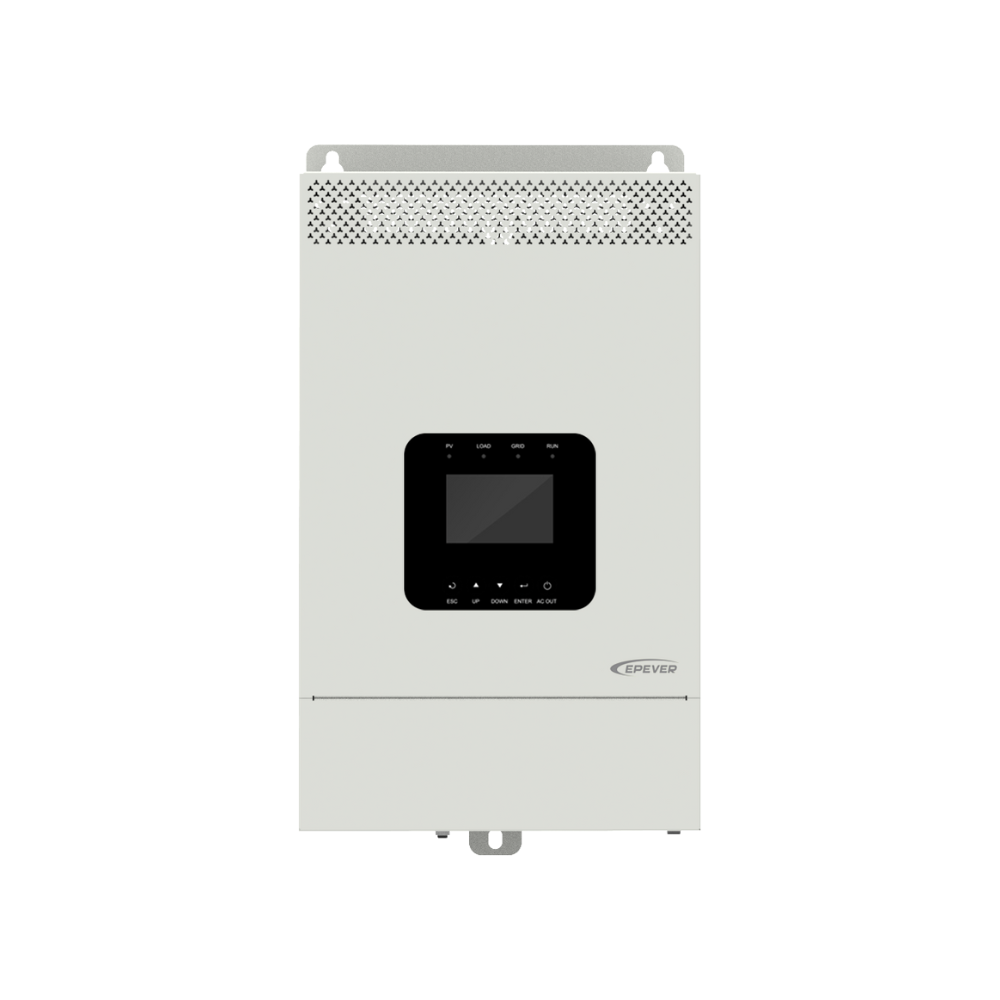


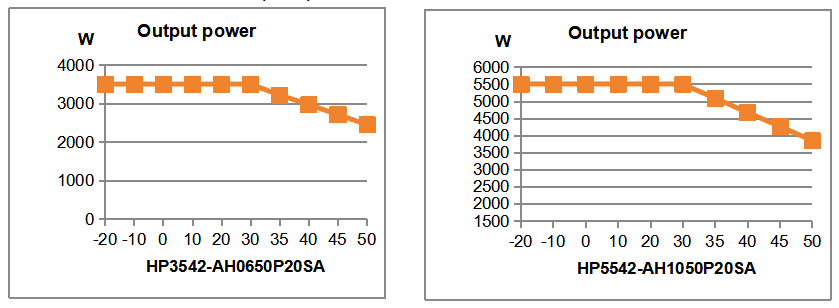
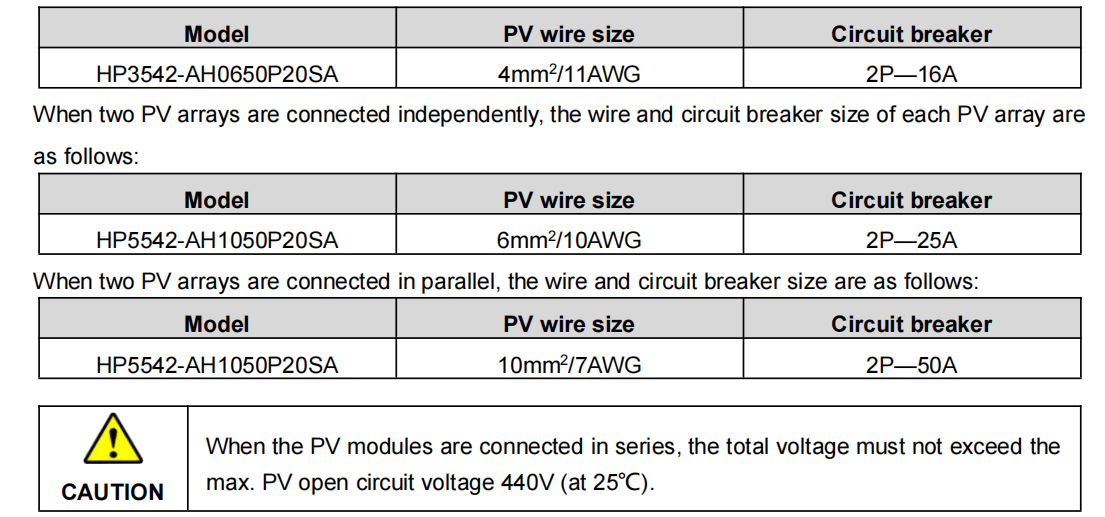
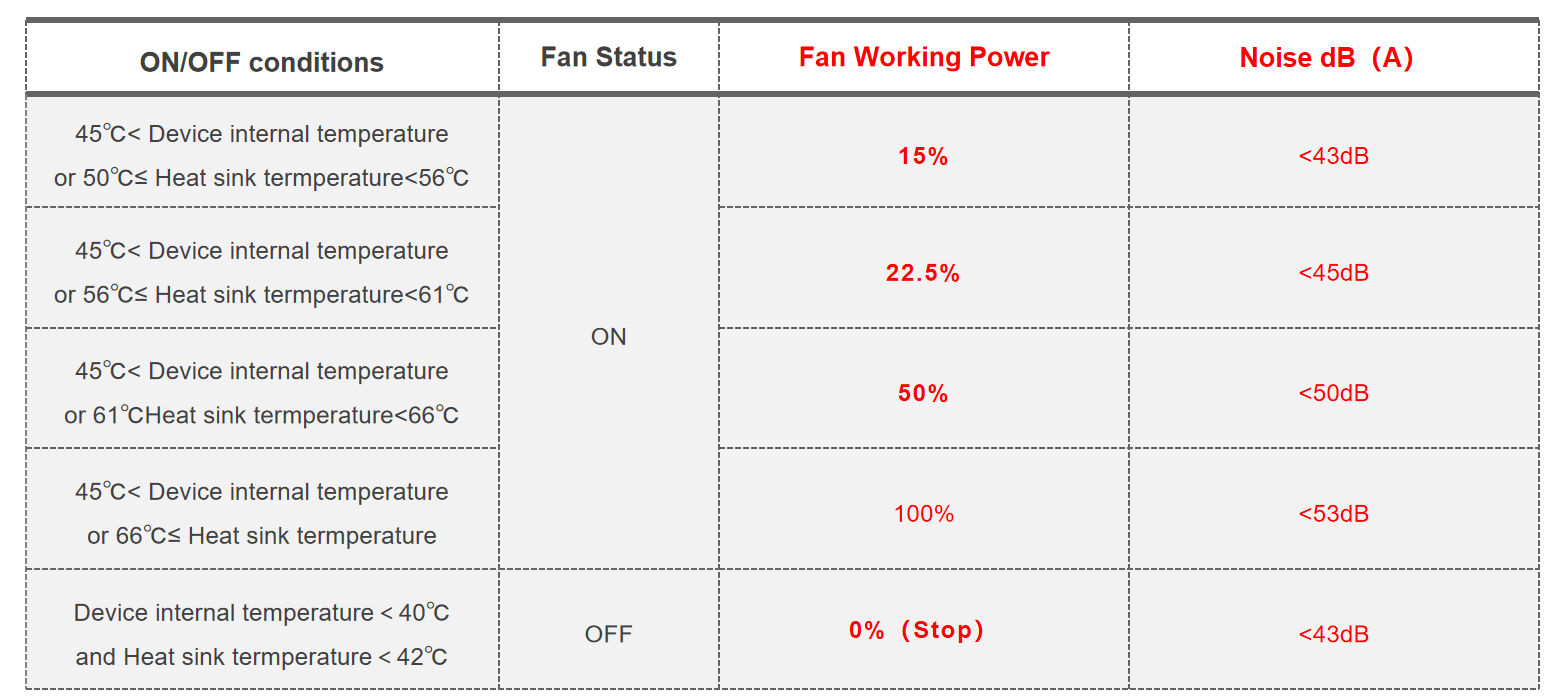
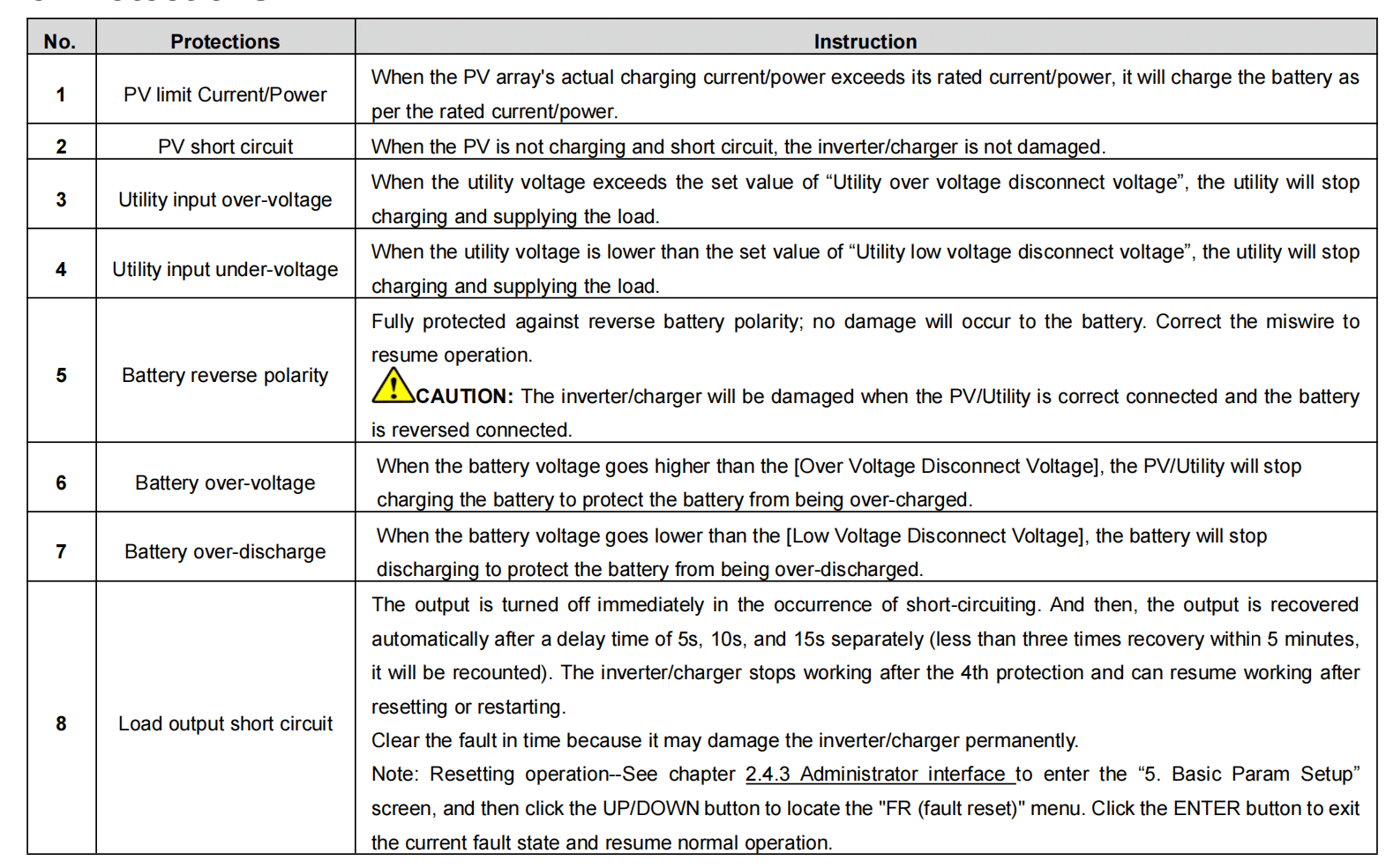
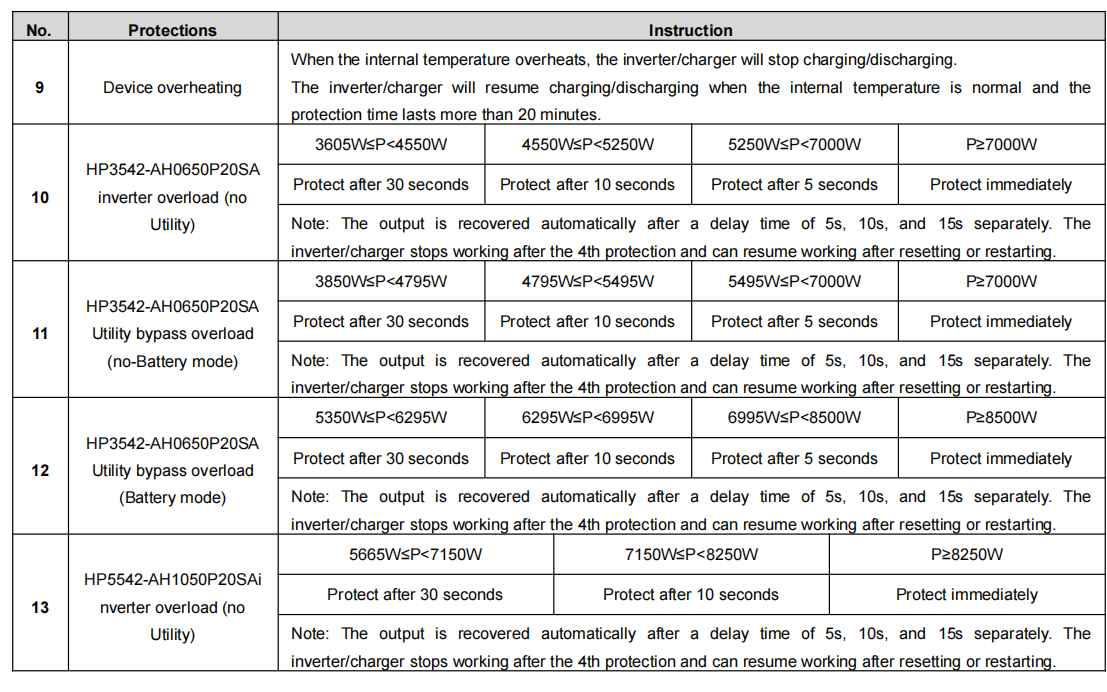

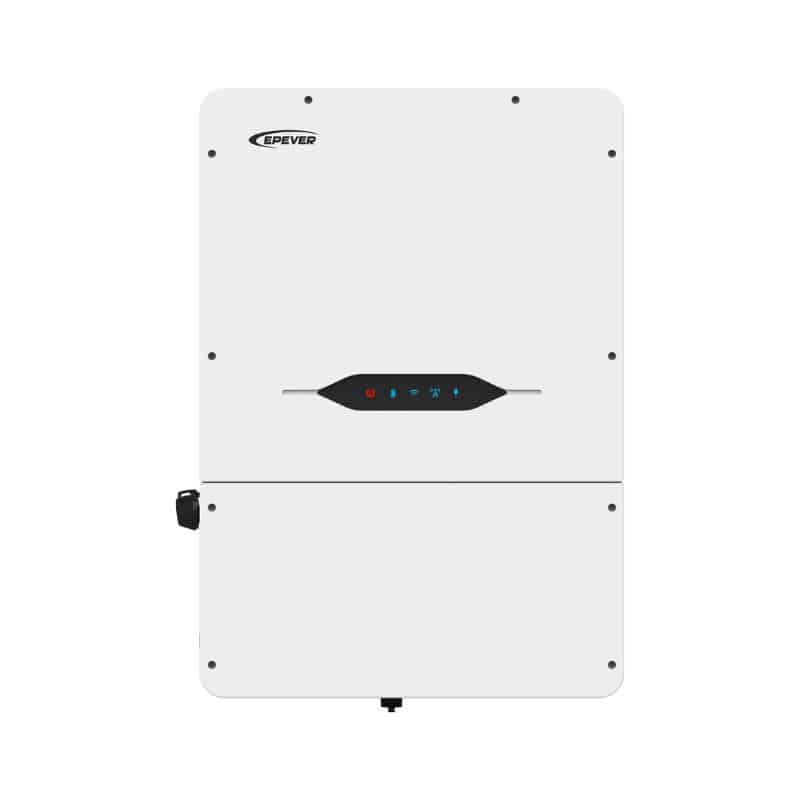
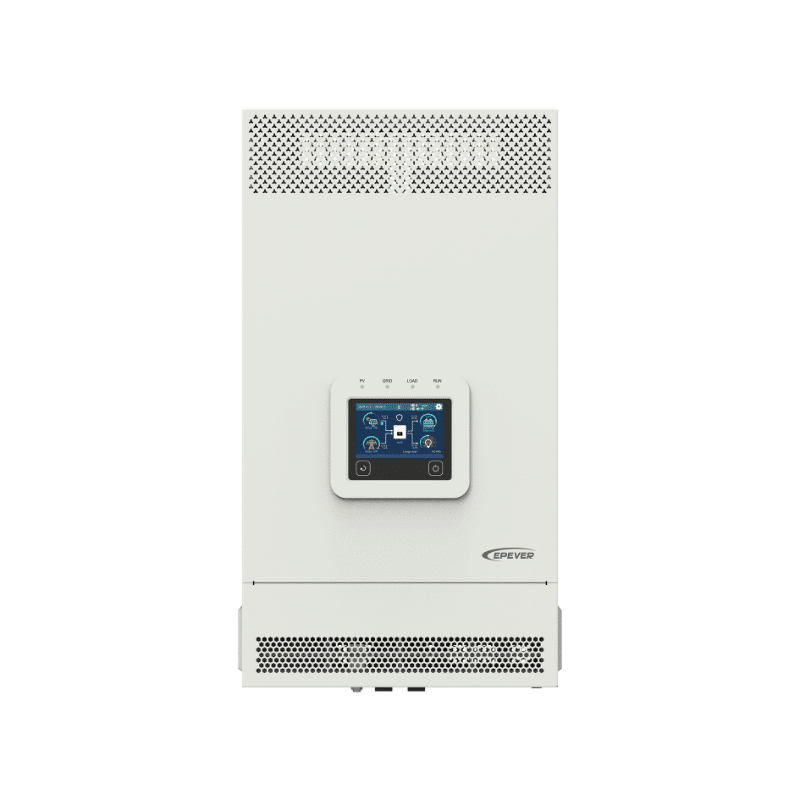
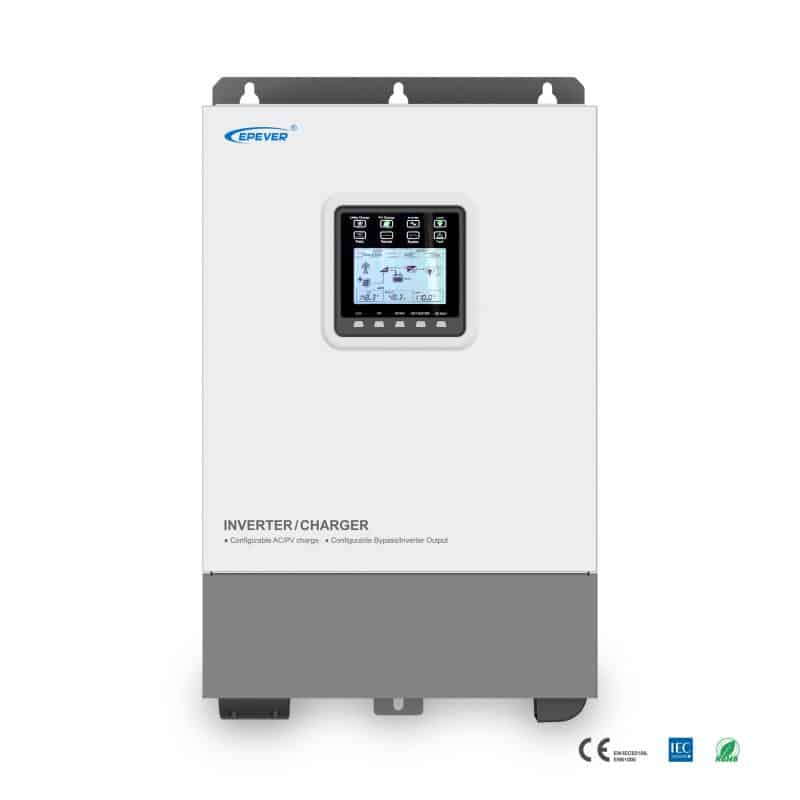
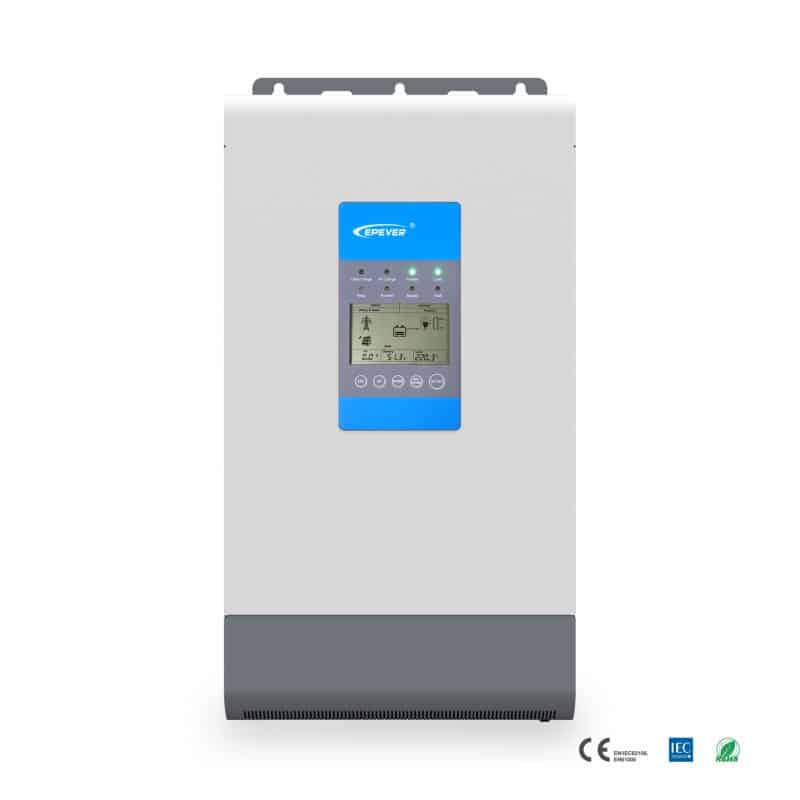
Dos santos –
Je viens de remplace mes ancien EPEVER (Série Upower (1000 ~ 5000W) Onduleur/Chargeur)par les nouveaux Epever HP3542-AH0650P20SA , incomparable tant en puissance , en conception, super qualité, silencieux.
je pensse qu’a l’usage je ne serais pas déçue, le prix est très correcte en comparaison de certain onduleur pour les même puissance.